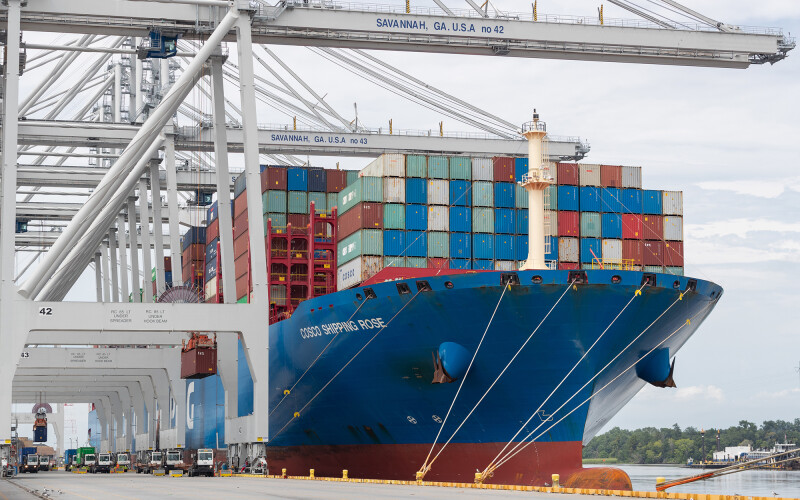The U.S. Trade Representative backed off an early proposal that could have levied fees on China-built ships of up to $1.5 million per port call, but will start by imposing a $50 per net ton fee beginning in mid-October 2025.
A notice published by USTR in the April 17 Federal Register opened a 30-day public comment period on its proposal for “certain services fees on the maritime transport services of Chinese operators and shipowners” and other measures the Trump administration says are needed to counter “China’s targeting the maritime, logistics, and shipbuilding sectors for dominance.”
“Ships and shipping are vital to American economic security and the free flow of commerce,” U.S. Trade Representative Jamieson Greer said in announcing the Register notice. "The Trump administration’s actions will begin to reverse Chinese dominance, address threats to the U.S. supply chain, and send a demand signal for U.S.-built ships."
The administration broached the possibility in February of imposing fees up to $1.5 million
on Chinese-built and owned ships, shocking the global maritime industry soon after U.S. operators welcomed Trump’s executive orders aiming to restore U.S. shipbuilding.
Faced with the possibility that port fees would make U.S. exports too expensive and impose up to $30 billion in costs to U. S. consumers, the USTR’s revised proposal starting at $50 a net ton would increase by $30 annually over the three years.
Ships built in China and owned by non-Chinese companies would pay $18 a net ton, rising $5 a ton annually over three years – a stepped approach aimed at reducing China’s advantages over other ocean carriers.
The port fees plan is proposed one year after the USTR under the Biden administration opened its investigation of China’s maritime policies, which in January formally reported that the Chinese government has employed unfair practices to cement dominance of the shipping industry.
“Specifically, USTR found China’s targeting for dominance unreasonable because it displaces foreign firms, deprives market-oriented businesses and their workers of commercial opportunities, and lessens competition and creates dependencies on China, increasing risk and reducing supply chain resilience,” according to an agency statement. “China’s targeting for dominance is also unreasonable because of Beijing’s extraordinary control over its economic actors and these sectors.”
The USTR proposal would hold off new port fees for 180 days, to a start date of Oct. 14. A first phase then would impose:
- “Fees on vessel owners and operators of China based on net tonnage per U.S. voyage, increasing incrementally over the following years;
- “Fees on operators of Chinese-built ships based on net tonnage or containers, increasing incrementally over the following years; and
- “To incentivize U.S.-built car carrier vessels, fees on foreign-built car carrier vessels based on their capacity.”
A second phase planned three years ahead would “incentivize U.S.-built liquified natural gas (LNG) vessels, limited restrictions on transporting LNG via foreign vessels,” according to the notice. “These restrictions will increase incrementally over 22 years.”
In the ongoing public comment period, USTR is also soliciting comments on proposed tariffs on ship-to-shore cranes and other cargo handling equipment – a sector increasingly dominated by Chinese manufacturers.




